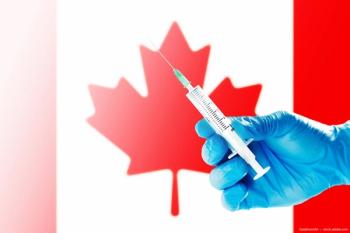
- Ophthalmology Times: April 1, 2021
- Volume 46
- Issue 6
DME trial results are positive for intravitreal integrin antagonist
Option has a broader biologic effect for patients.
This article was reviewed by Raj K. Maturi, MD
The integrin antagonist, THR-687 (Oxurion), showed promising efficacy as a treatment for
The open-label, nonrandomized, dose-escalating study (NCT03666923) enrolled 12 patients who were followed for 3 months after receiving 1 intravitreal injection of THR-687.
The study met its primary end point as there were no dose-limiting toxicity events by day 14 post injection.
Related:
Results from exploratory efficacy analyses showed that THR-687 had the potential for rapid onset of action and reasonable durability for improving visual acuity.
“Multiple challenges remain in the management of DME with unmet needs to improve treatment outcomes, speed of treatment benefit, and the duration of response,” said Maturi, a clinical associate professor of ophthalmology at Indiana University School of Medicine, and in private practice at Midwest Eye Institute in Indianapolis, Indiana. “Unlike anti-VEGF agents, integrin antagonists have a broader biologic effect because integrins contribute to the activation of multiple growth factor receptors and are involved in multiple processes resulting in pathological angiogenesis and vascular leakage.”
Maturi noted that based on the phase 1 study findings, a multiple dose, 2-part phase 2 study is planned to select the dose level of THR-687 and to compare it with aflibercept (Eylea, Regeneron) for treatment-naive patients with DME.
Patients were eligible for the phase 1 trial if they had center-involved DME with a central subfield thickness (CST) of 320 µm or greater on spectral-domain optical coherence tomography, best corrected visual acuity (BCVA) between 23 and 62 Early Treatment Diabetic Retinopathy Study (ETDRS) letters, and a history of and current response to treatment with anti-VEGF or corticosteroid therapy.
Related:
The study
The study included 3 sequential dose groups: 3 patients received THR-687 0.4 mg, 3 were treated with 1.0 mg, and 6 were treated with 2.5 mg.
The baseline mean BCVA was 56.3 ETDRS letters for the overall cohort and well-balanced between the 3 dose groups.
The baseline mean CST was 541.8 µm, and lower in the highest-dose group (499 µm) than in the 2 lower-dose groups (557 µm and 612 µm).
The safety analyses showed a total of 9 adverse events among 5 subjects, but there were no dose-limiting toxicities or serious adverse events.
“All treatment-related adverse events were in the study eye; most were likely related to the injection procedure and the others were likely due to underlying disease progression or concomitant diseases,” Maturi said.
Related:
Three patients, including 1 treated with the 1.0-mg dose of THR-687 and 2 treated with the 2.5- mg dose, required rescue treatment. Per protocol-defined criteria, this was given for BCVA worsening of 10 ETDRS letters or more, or a 50-µm or greater increase in CST as assessed by the study investigator.
The BCVA and CST data for these patients were censored at the time of rescue injection and carried forward for the efficacy end point analyses.
Results from BCVA testing showed a rapid onset of improvement, with a mean gain of 3.1 ETDRS letters seen in the overall cohort on the day after injection and a gain of 7.2 letters by day 7.
A mean improvement of 9.2 letters was seen at month 1, which represented the peak gain, and BCVA remained improved from baseline by a mean of 8.3 letters at month 3.
Related:
Conclusion
The change in BCVA appeared to be dose-related.
“The most pronounced improvement in BCVA was observed in the highest-dose group that had a mean improvement of 9.8 letters by day 7, 11.2 letters by day 14, and a mean gain of 12.5 letters at month 3,” Maturi reported.
In the overall cohort, the treatment was associated with a marginal beneficial effect on CST at 7 days and at 1 month with an increase thereafter. However, the highest-dose treatment group had a mean CST decrease of 106 µm at day 14 and maintained a decrease of 36.5 µm at month 3.
--
Raj K. Maturi, MD
e:[email protected]
Maturi received clinical research funding from Oxurion (previously ThromboGenics) as an investigational study site for the phase 1 clinical trial of THR-687 for DME.
Articles in this issue
over 4 years ago
Telemedicine ushers in new chapter in eye careover 4 years ago
Should nonclinicians inject dexamethasone implants?over 4 years ago
Eliminating the potential land mines in glaucoma surgeryover 4 years ago
Unplugging the clogged drain in glaucomaover 4 years ago
Editorial: Ophthalmology during COVID-19over 4 years ago
ARVO sets stage for virtual eventNewsletter
Don’t miss out—get Ophthalmology Times updates on the latest clinical advancements and expert interviews, straight to your inbox.













































.png)


